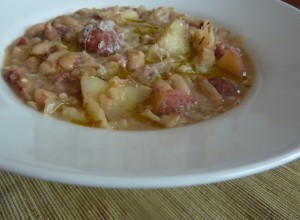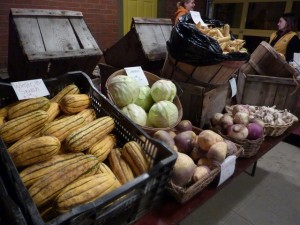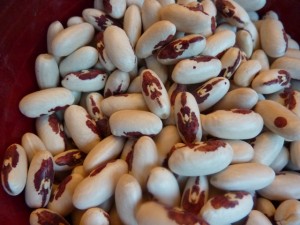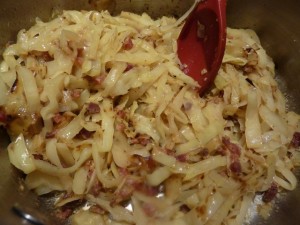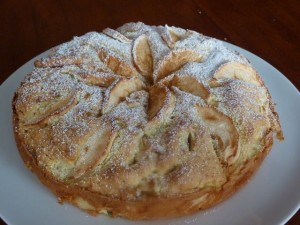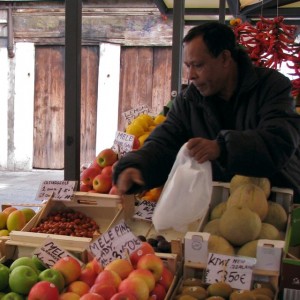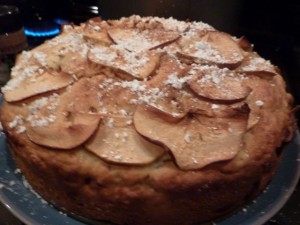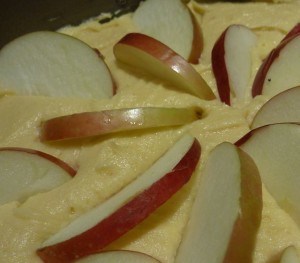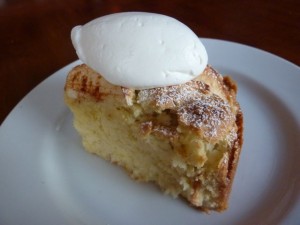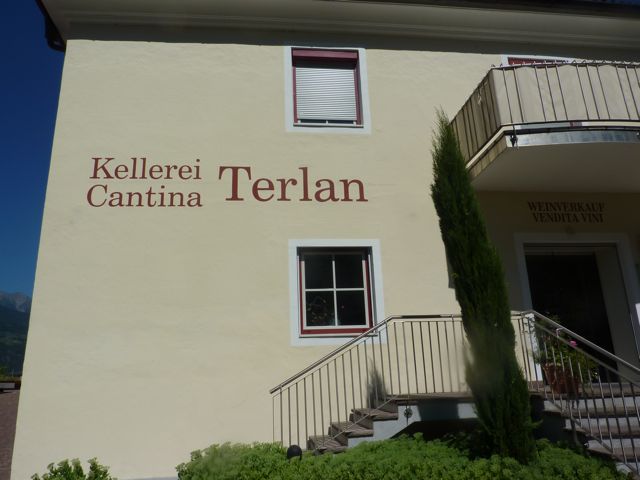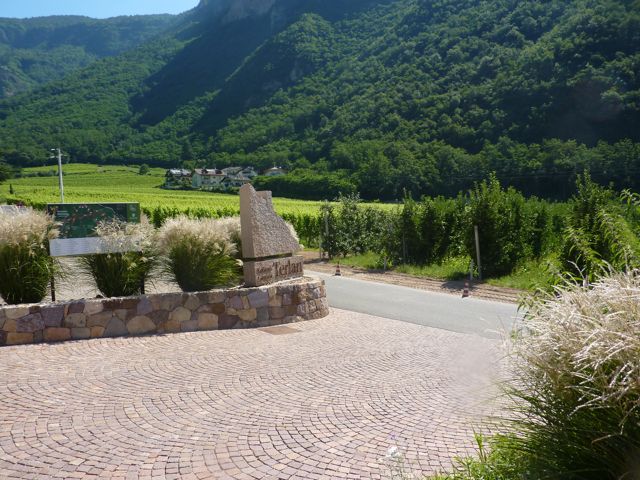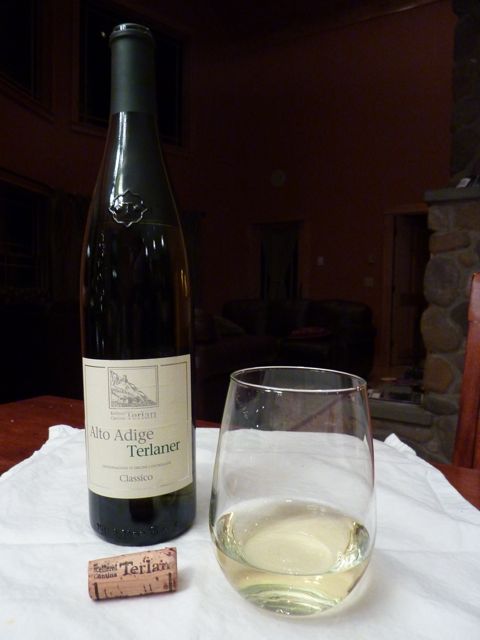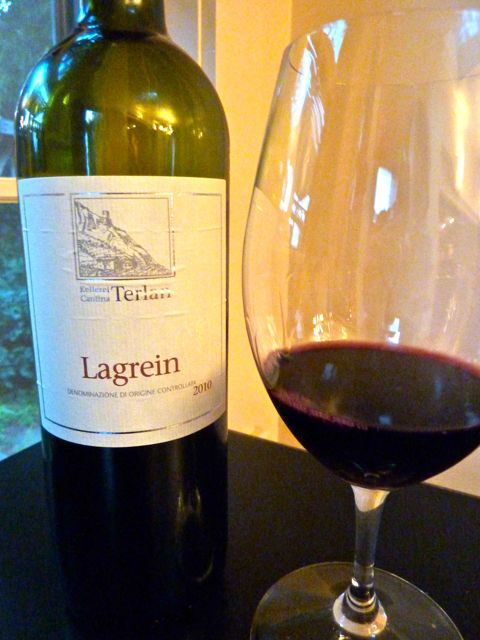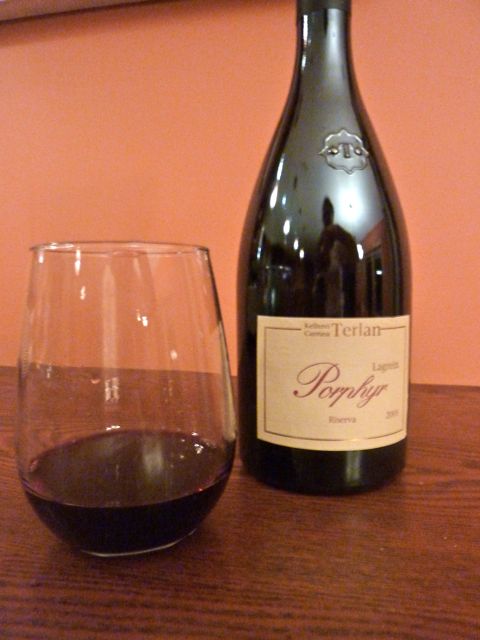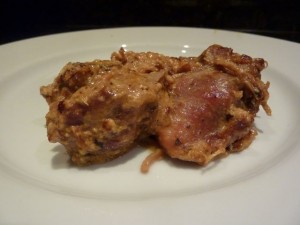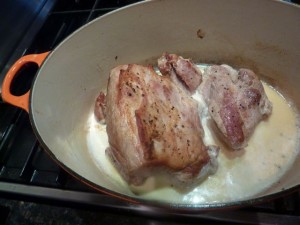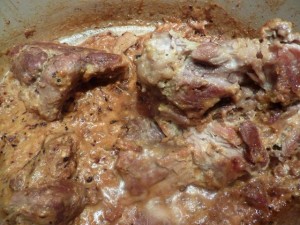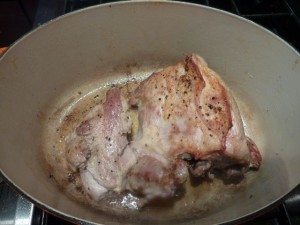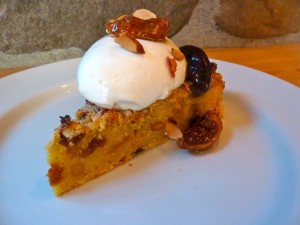
A recent cooking class got me thinking out of the box (which is always good) as one of the participants was allergic to cow dairy. No butter, milk, cow cheese or cream. The savory dishes were easy, a cheese-free Risotto with salmon, roasted chicken, arancini stuffed with goat cheese and mushrooms, and a salad. But the dessert gave me a bit of a pause. I could have substituted lard for butter in a pie crust or cake, but I wanted to use this opportunity to find something a little different. Then I remembered a dessert based on polenta that we had planned for our cooking classes on our last Italiaoutdoors Chefs on Bikes tour of Italy. We didn’t quite get around to it on our trip, but here was a great opportunity to try it out.
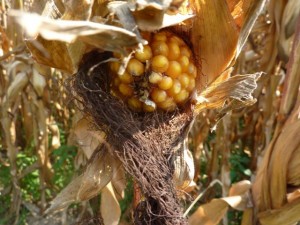
Polenta is a staple in Northern Italy, replacing pasta in some regions as the most popular starch. For hundreds years, the residents of these northern regions literally survived on this staple. You will see it served as a soft ‘mush’ as a side dish to meats, and then the leftovers allowed to harden and served grilled, or topped with cheese and soppressatta and broiled. In the recipe that follows, leftover polenta is combined with dried fruits and nuts, and baked as a shortcake.
Originally, polenta was made with a variety of grains, millet, spelt, and eventually buckwheat. Corn, or maize, was unknown in Italy until it made its way there from North America in the 15th and 16th centuries. The Spanish and Portuguese ships traveling from the Caribbean to Europe would bury their treasures and gold in flint corn to hide it from pirates. This new grain was easier to cultivate and had higher yields than the traditional grains, making it much less expensive to produce, so these other grains soon took a back seat to maize as the grain of choice.
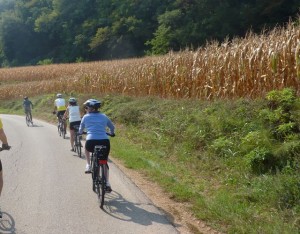
Today, we see many fields of corn as we explore the Veneto by bike or foot. What we don’t see, however, is fresh corn on the cob at mealtime. The corn cultivated there is used for either animal fodder, or dried and ground into meal for polenta. Cornmeal can be stored for a long time, and so historically would have been how corn was incorporated into the cuisine before modern techniques such as freezing and refrigeration.
This recipe is based on Marcella Hazan’s recipe from her classic cookbook, Essentials of Classic Italian Cooking. In her book, she mentions that James Beard became fascinated with this particular dessert during a stay in Venice, and asked Marcella to provide the recipe. The addition of dried fruits and nuts reflects Venice’s role for hundreds of years as the crossroads of trade between Europe and the Near East.
I took the liberty of adding a bit of the favorite local digestif, grappa, to give it a bit of a kick.
Polenta Torta con i Fichi Secchi, Uva Passa, Pignoli e Grappa
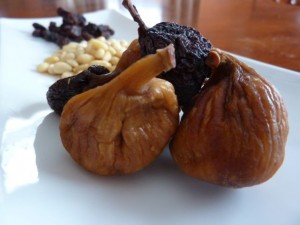
Serves 6-8
1/3 cup seedless raisins
1 cup dried figs, cut into 1/4 inch pieces
1/4 cup grappa
1 cup coarse cornmeal
Kosher salt
3 1/2 tablespoons extra virgin olive oil, plus extra for smearing the pan
1/2 cup granulated sugar, plus more for dusting
1/3 cup pignoli (pine nuts), toasted
1 egg, slightly beaten
1 cup all-purpose flour, plus more for dusting
Preheat the oven to 400°.
Place the raisins and figs in a small bowl, and cover with the grappa. Allow to sit for 30 minutes.
Bring 2 cups water to a boil in a medium-size saucepan. Reduce the heat to medium, and then whisk in the cornmeal, adding it in a thin, steady stream. Season with salt and add 1 1/2 tablespoons of the olive oil. Continue to stir as the cornmeal thickens and pulls away from the sides of the pan, about 15 seconds or so. Remove from the heat.
Add the sugar, pine nuts, raisins, figs, remaining 2 tablespoons olive oil, the egg, and mix thoroughly to combine all of the ingredients. Add the flour and mix well to form a smooth cake batter.
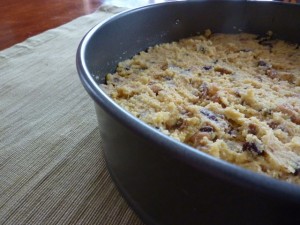
If not using a non-stick pan, smear the cake pan with olive oil, sprinkle lightly with flour, turning it upside down and tapping it to remove the excess. Place the batter in the pan, leveling the top with a spoon. Sprinkle with sugar, place the pan in the oven and bake for 45-50 minutes.
While the cake is still warm, loosen its sides from the pan with a knife, and remove from the pan. Serve with whipped cream and roasted fruit, or a fig compote. A nice sweet Torcolato dessert wine from Breganze would make a nice accompaniment.
